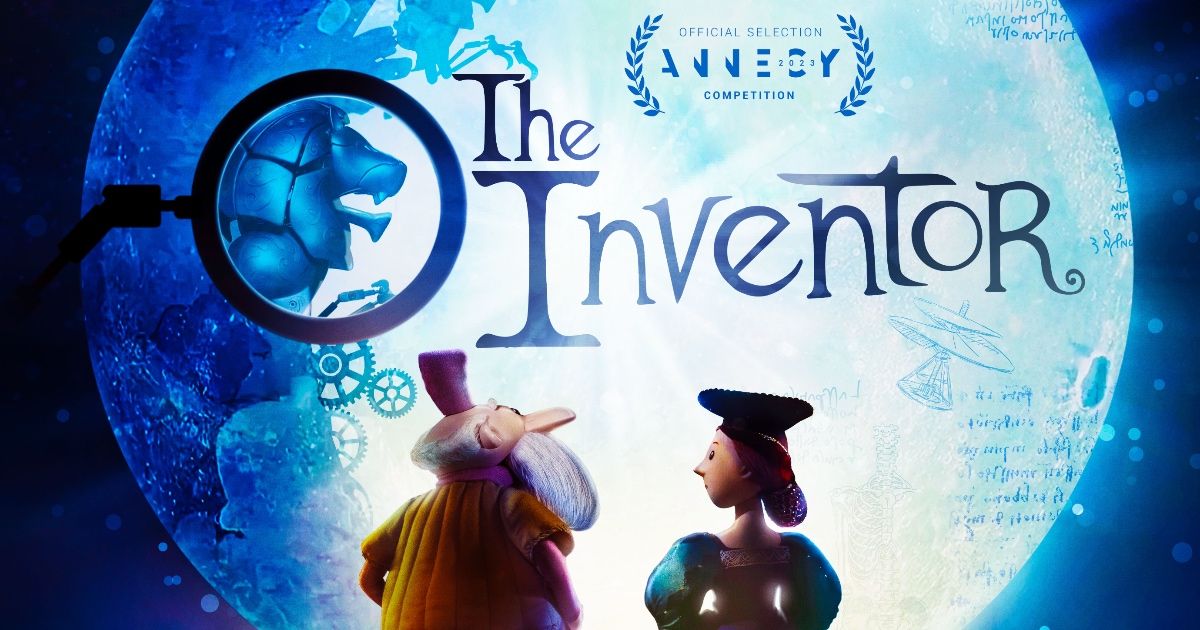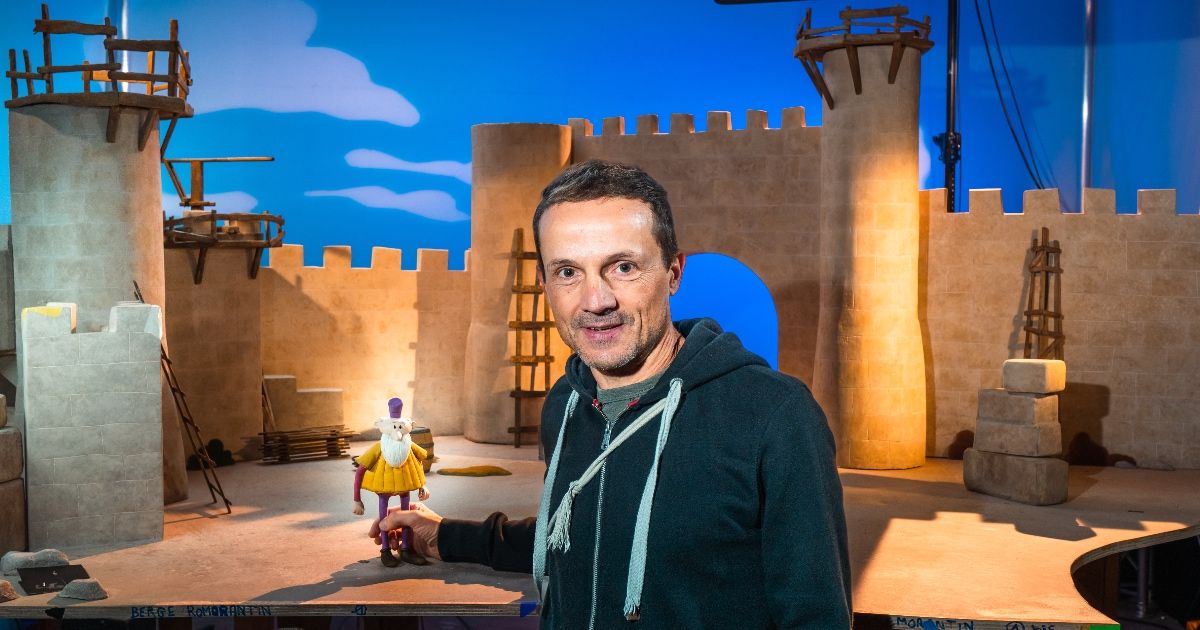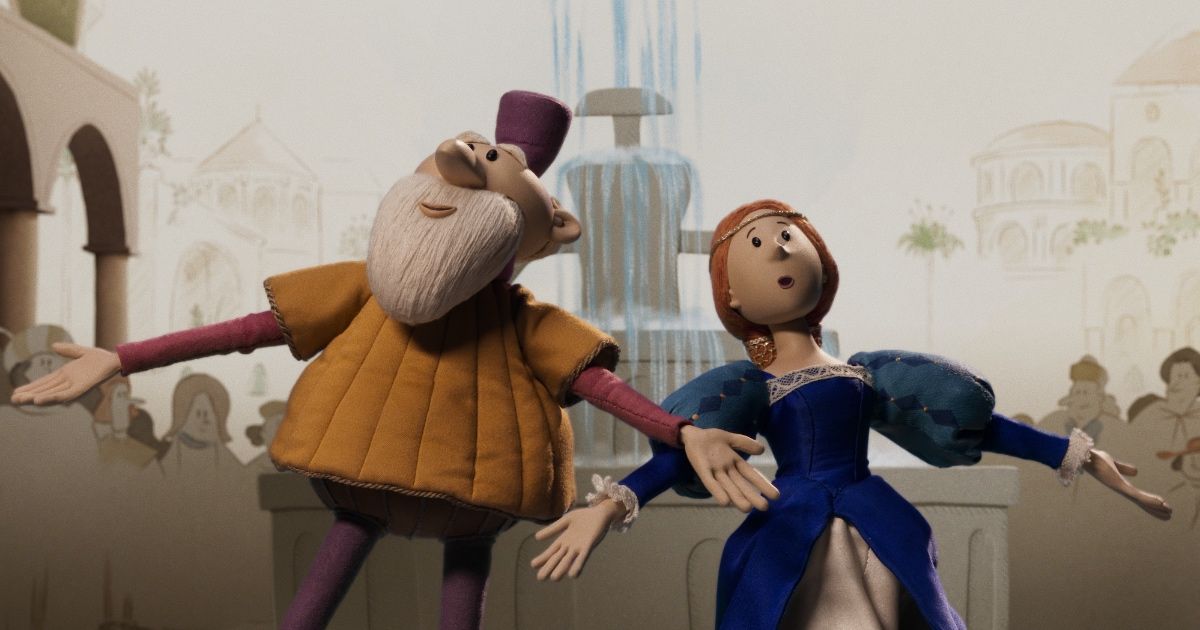Long before society was pushed to embrace artificial intelligence as a vital way to think and imagine, virtually threatening the human’s innate ability to do so, there were great thinkers whose minds were encouraged and celebrated much in the way advanced computer technology is today.
One such individual was Leonardo da Vinci, who lived during the 16th century and is perhaps best known for painting portraits like “The Mona Lisa” and murals like “The Last Supper.” An accomplished and celebrated Italian artist, engineer, scientist, philosopher, and architect, as shown in the new animated feature film, The Inventor, da Vinci was also a complicated and flawed human being.
Written and co-directed by the Academy Award-nominated screenwriter of Ratatouille, Jim Capobianco, and co-directed by Pierre-Luc Granjon (A Little Adventure), The Inventor is a seamless blend of hand-drawn and stop-motion animation that’s gorgeous to look at. The film chronicles the journey of artist and inventor Leonardo da Vinci after he flees Italy and joins forces in France with Princess Marguerite on a mission to satisfy an undying question in his soul: “What is the meaning of life?”
With the voices of Stephen Fry (Wilde) as da Vinci and Daisy Ridley (Star Wars: The Force Awakens) as Princess Marguerite, The Inventor, though 12 years in the making, is a well-timed and refreshing matter-of-fact reminder to moviegoers of the possibilities and capabilities of pure, free, and wondrous human thinking.
Screenwriter Jim Capobianco, who co-directed The Inventor with Pierre-Luc Granjon sat down with MovieWeb in an exclusive interview to discuss what inspired the film and the significance of its stylistic approach.
What Inspired a Film About da Vinci
“For me,” explained Capobianco, “the inspiration for The Inventor stemmed from the perspective that, sure, we’re touching on the idea of Leonardo as the genius, but more than that we are depicting him as a human being.” He continued about da Vinci:
“In doing my research about him, in his drawings, he had lists of groceries and things he needed to do and buy, and notes about the trouble he was having with his apprentices. And then too, he had jotted down things about procrastinating and how he couldn’t get on with things without being distracted. And so it was like looking into his diary. And those things really brought out the human element of him. And so that’s what I really wanted to explore.”
Granjon added similar sentiments. “I just remember when I read the script for the first time, what I was really excited about was realizing how, even though Leonardo was already an old man when he arrived in France, he still had so much life inside of him, a curiosity about everything. I think if we can keep this inside us too, this curiosity about life, it can keep us alive.”
“And also, too, what Jim said about Leonardo’s humanity,” Granjon continued, “in the movie, we can see this fragility. He was well known for starting and then not finishing things, and that’s an aspect of his life that is rarely focused on. And so in this movie, in The Inventor, that is told. And that’s something I really enjoy. Leonardo was a human after all, and that was a very good thing to explore for sure.”
Regarding da Vinci’s tendencies toward procrastination, Capobianco noted how universally relatable it was:
The idea of procrastination and struggling, just not feeling like you can finish everything and get things done, I think that truly speaks to people.
Why Computer Animation Wasn’t an Option for The Inventor
From conception to opening weekend, it was a long 12 years leading up to the release of The Inventor. One of the ways that things could have perhaps moved faster would have been to focus on computer animation versus stop-motion and hand-drawn art. Doing so, however, was never an option.
“For me,” Capobianco stressed, “a film about Leonardo da Vinci felt like it really should be a handcrafted art form, and the two techniques of animation that are handcrafted are stop-motion and drawn animation. So the idea to combine the two of them seemed perfect for honoring Leonardo. He was an inventor after all.”
Capobianco, who obtained a BFA in character animation from Cal Arts and has worked on such animated films as The Lion King, The Hunchback of Notre Dame, Fantasia 2000, A Bug’s Life, Toy Story 2., Monsters Inc., and Finding Nemo shared additional insight on the intentional style choice for The Inventor:
“Plus, my background is hand-drawn animation. That’s precisely why I got into animation in the first place, to do those types of movies. And then computer animation showed up while I was in school. To me, my love has always been hand-drawn animation, and I always appreciated stop-motion. So to me, that felt like the perfect way to go for The Inventor.”
“But,” he noted, “I also had no idea how to make a stop-motion movie. So that’s why I needed Pierre-Luc to help me.”
Granjon, who studied at the prestigious Applied Art School of Lyon in France and created the stop-motion films A Little Adventure and The Other Kid’s Castle (among other award-winning productions), added, “Like Jim said, to do a stop-motion movie about Leonardo was obvious in a way. It was a good choice, because Leonardo wanted to know everything about life, the weather, water, all of the earth, and he was just curious about everything. And he enjoyed building things, so constructing the puppets for the movie was, in a way, like Leonardo.”
Capobianco offered more in terms of the technical aspects and how he believes da Vinci would have reacted, “The engineering of the armatures was very interesting. They’re made of metal, and figuring out the joints and how they would work was very much a mechanical process that we know da Vinci would have loved.”
The Timeless Inspiration of da Vinci
Though Leonardo da Vinci died in 1519, he remains one of the most studied and well-known names in history. Through The Inventor, there is hope for how he will reach new generations and perhaps re-ignite older ones.
Said Capobianco, “For the children, The Inventor will be something they will enjoy, I hope, and something that they will find magic in, and want to return to throughout their lifetimes and get something new and be inspired by differently each time.” He added:
And then for adults, I hope they will come out of the theater and understand the depths of the story of Leonardo’s legacy and I hope it re-instills in people the importance they have in life to one another.
Granjon agreed and elaborated on the perhaps unintentional but certainly effective message regarding the importance of letting the human mind soar, especially in these AI times.
“I hope that children can see how much they need to keep their curiosity alive throughout their entire lives and to not lose their dreams,” Granjon said. “To keep his dream alive, that is basically what Leonardo did. When he was 60 years old, he was still exploring life and discovering new things. It’s amazing.”
“Yes,” agreed Capobianco. “People need to be reminded that we all still need to know about the world.”
The Inventor will be released in theaters on September 15th. You can find showtimes and more information here.
This story originally appeared on Movieweb



